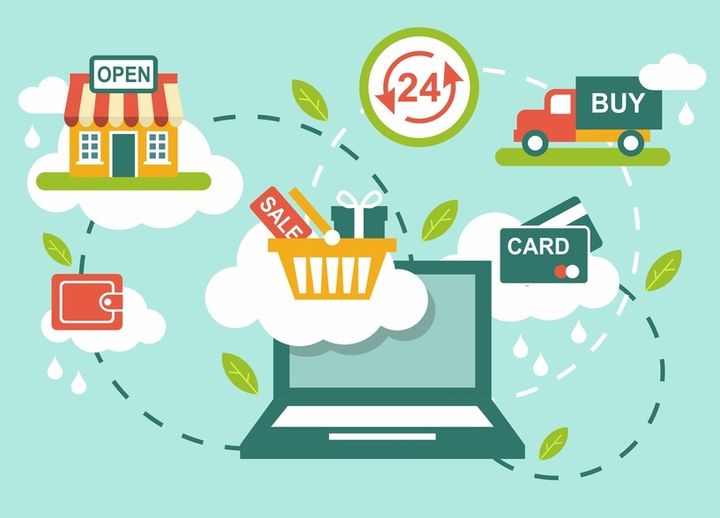
2-real-benefits-adopting-omnichannel-retail-strategy-marshall-hughes
Omni-channel Sales or System may sound a little foreign to some, but its meaning is just as easy to grasp as the name suggests. According to Wikipedia
Omnichannel is a cross-channel business model that companies use to improve their customer experience. The approach has applications in healthcare, government, financial services, retail and telecommunications industries, and includes channels such as physical locations, FAQ web pages, social media, live web chats, mobile applications and telephone communication.
As small- to medium-sized businesses grow, retailers may want to expand into international markets. This is a particularly useful method for handling inventory that is about to be outdated by newer models and therefore see plummeting sales. Getting into this type of market, however, requires serious strategy and business intelligence.
Reaching a global market may seem daunting for smaller retailers that are not considered enterprise level. Enterprise-level companies may be defined--roughly--as huge businesses that operate over large geographic areas and have a business strategy through which the company is comprised of several discrete organizational units or departments. Obviously, these large organizations are already visible and well-established within international markets.
Smaller retailers tend to focus on domestic markets. Intuitively, this makes sense: small- to medium-size companies do not typically have the resources to ship, promote, or otherwise address foreign markets. However, by incrementally syndicating products into new international marketplaces, retailers can exponentially increase the visibility of their products and services. This seems like a simple enough idea on paper; however, the logistics involved in entering new territories can be daunting enough to discourage even more ambitious retailers.
By introducing Omni-channel sales solutions, companies are utilizing Artificial Intelligence (AI) and big data to streamline the process of selling internationally. The Omni-channel approach is a type of retail system that integrates the different methods of shopping available to consumers.
Omni-channel customer service is a step up, because it incorporates multichannel retailing, which means customers have several methods of purchasing goods and services, such as catalogues, brick-and-mortar stores, and telephone, as well as online. Additionally, omni-channel sales allow customers to maintain communication with the business through the entire Omni-channel fulfillment process.
This effective but complicated process is best achieved through use of a dedicated third-party, which can offer retailers access to omni-channel market choices. Companies like goTRG have done a great job of filling this space by offering small businesses access to over 20 million Omni-channel market choices.
These innovative tech companies achieve their success through automation and AI. For instance, 9040TM price control and intelligence uses data collection analytics to automate millions of sell price decisions a day. This software utilizes deep learning technology to track over a thousand different websites and a curated 500 million market data points to create automatic product catalogues and provide instant and dynamic pricing.
What’s more, these technologies allow the retailer full control of operations through comprehensive dashboards with easily-navigated interfaces.
AI is an excellent solution because it makes decisions without bias without completely overriding the retailer. Although AI provides the retailer with automated pricing, the retailer has ultimate control over prices, should he or she decide to override the system’s decision. 9040TM also provides smart return technology, by which AI decides where items should go after the return is complete. It directs the items to RTV; restock, refurbishing, recycling, or liquidation. This, combined with the third-party’s warehouse transportation, ups efficiency and ultimately increases profit margins.
Another key element to Omni-channel solutions is complete system integration. Easy-to-use dashboards and interfaces provide retailers with listing and pricing tools across all markets. To aid business owners make the best purchase decisions, billing and invoicing are linked directly to fulfillment, creating a synchronized system with perfect accuracy.
Ultimately, implementation of an Omni-channel strategy means a retailer can distribute across all global exchanges, with sophisticated technology maximizing margins on popular products as well as remnant inventory and returns.
This would be a deal otherwise too big for companies that are not considered enterprise-level, but the greatest news of this century is that technology is always seeking a way to make the impossible possible and the Omni-channel Strategy is just the answer that we have been looking for.
